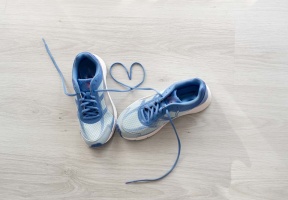

Aerobic Exercise
What it does: Aerobic exercise improves circulation, which results in lowered blood pressure and heart rate, reports say. In addition, it increases your overall aerobic fitness, as measured by a treadmill test, for example, and it helps your cardiac output (how well your heart pumps). Aerobic exercise also reduces the risk of type 2 diabetes and, if you already live with diabetes, helps you control your blood glucose.
How much: Ideally, at least 30 minutes a day, at least five days a week.
Examples: Brisk walking, running, swimming, cycling, playing tennis and jumping rope. Heart-pumping aerobic exercise is the kind that doctors have in mind when they recommend at least 150 minutes per week of moderate activity.
Resistance Training (Strength Work)
What it does: Resistance training has a more specific effect on body composition. For people who are carrying a lot of body fat (including a big belly, which is a risk factor for heart disease), it can help reduce fat and create leaner muscle mass. Research shows that a combination of aerobic exercise and resistance work may help raise HDL (good) cholesterol and lower LDL (bad) cholesterol.
How much: At least two nonconsecutive days per week of resistance training is a good rule of thumb, according to the American College of Sports Medicine.
Examples: Working out with free weights (such as hand weights, dumbbells or barbells), on weight machines, with resistance bands or through body-resistance exercises, such as push-ups, squats and chin-ups.
Stretching, Flexibility and Balance
What they do: Flexibility workouts, such as stretching, don’t directly contribute to heart health. What they do is benefit musculoskeletal health, which enables you to stay flexible and free from joint pain, cramping and other muscular issues. That flexibility is a critical part of being able to maintain aerobic exercise and resistance training.
How much: Every day and before and after other exercise.
Examples: Your doctor can recommend basic stretches you can do at home, or you can find DVDs or YouTube videos to follow (though check with your doctor if you’re concerned about the intensity of the exercise). Tai chi and yoga also improve these skills, and classes are available in many communities.











